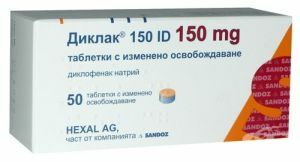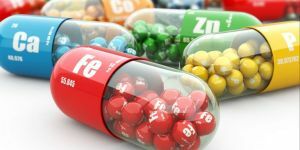 Diseases of bones, joints, ligaments are quite widespread among the modern population. However, few people think about the health of their body before the appearance of pain, discomfort and a tangible impact on the quality of life.
Diseases of bones, joints, ligaments are quite widespread among the modern population. However, few people think about the health of their body before the appearance of pain, discomfort and a tangible impact on the quality of life.
To restore the normal state of the body and prevent the appearance of diseases of the bones, joints and cartilage can be through the intake of vitamins.
Content of the article
- Importance of vitamins for joints and bones
- Consequences of lack of vitamins
- Vitamin A( Retinol)
- B1( Thiamine)
- Vitamin B5( Pantothenic acid)
- B6( Pyridoxine)
- Vitamin C( Ascorbic acid)
- D3( Cholecalciferol) andD2( Ergocalciferol)
- Vitamin E
- Vitamin K
- Microelements are also food for joints and bones
- Vitamin and mineral complexes
Importance of vitamins for joints and bones
Bones, joints, cartilages and ligaments are part of the body, and wellare vitamins not less than all the other organs. The bone system provides the motor and support function. Preserves macro and microelements. Provides protection of internal organs from damage and injuries.
An incorrect lifestyle, an abundance of stress, inadequate nutrition, sedentary work lead to problems and diseases of bones and joints in fairly young people. In the elderly, a lack of vitamins and fragility of bones can be quite dangerous due to slow regeneration processes. Insufficient strength of bones and elasticity of joints, ligaments can lead to serious injuries and potential disability.
Provide strength to bones, joints, cartilage can be through vitaminization. Some vitamins are produced by the human body itself. However, they are clearly not enough for normal functioning. Missing vitamins enter the body with consumed food, or in the form of vitamin complexes, special supplements.
Consequences of lack of vitamins
The lack of vitamins in the body can arise for several reasons:
- low content of vitamins in consumed food;
- during pregnancy, during lactation, in old age, with high physical exertion and diseases;
- diseases of the gastrointestinal tract and dysbacteriosis disrupt the process of assimilation of vitamins;
- presence of chronic diseases;
- disruption of the process of biosynthesis in the intestinal microflora;
- food is rich in antivitamins.
A lack of vitamins can lead to the following negative consequences for joints, bones and cartilage:
- degeneration processes develop;
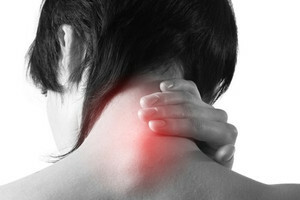
- slowing cell regeneration;
- pain in the joints, bones;
- viral diseases of the joints;
- decreased elasticity of ligaments, joints, cartilage;
- develops osteochondrosis;
- arthritis;
- dysplasia of the bones;
- lag in physical development in children;
- deformation of the spine, bones;
- osteoporosis;
- rickets;
- ossification of cartilage;
- osteoarthritis.
Which vitamins are most needed for joints and bones?
Vitamin A( Retinol)
Necessary for oxidative and reducing processes in the body, normalizes the functioning of plasma membranes, promotes the development of new cells, slows down the aging of the body. Vitamin A is required for the process of bone formation, the normal operation of human immunity. Slows the processes of degeneration in the joints, cartilages and ligaments.
With a lack of vitamin A, there is a general decrease in the body's immunity, the process of cell regeneration, in particular joints and ligaments, slows down. Due to changes in joints and cartilages, the development of osteochondrosis and osteoarthritis is possible.
Vitamin A is found in the following products:
The plant origin of- is .Vegetables green and yellow( carrots, sweet peppers, green onions, parsley, hops, broccoli, pumpkin), fennel, beans, peaches, nettle, grapes, hips, apricots, watermelon, melon, burdock, apples, kelp,cherries.
- of Animal Origin .Fish oil, liver, caviar, whole milk, sour cream, cottage cheese, cheese, butter, egg yolk.
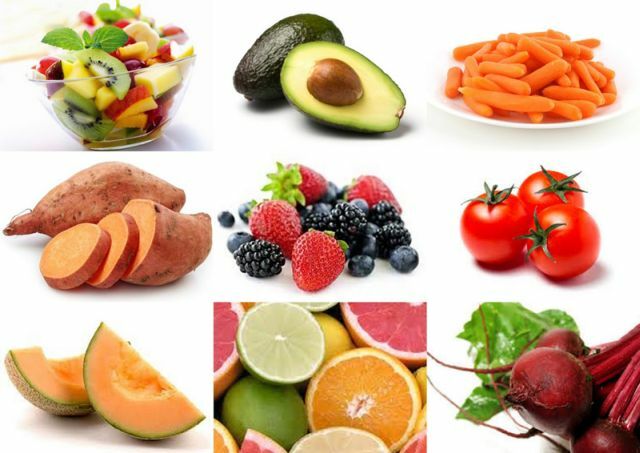
B1( Thiamine)
Takes part in the normalization of metabolism, the metabolism of carbohydrates. Promotes the growth of muscles and bones, inhibits the aging process in the body.
When thiamine deficiency occurs muscle atrophy, limb paresis may develop. The consequence of this is the development of pathologies of joints and ligaments.
In the human body, vitamin B1 is not produced, so it is necessary to consume it with food.
Vegetable products: beans, soybeans, peas, potatoes, spinach, cabbage, carrots. Animal products: kidney, liver, brain, beef, pork.
Vitamin B5( Pantothenic acid)
Stimulates the production of glucocorticoids in the body, this property of the vitamin is used to treat arthritis.
With a deficiency in the body, there may be muscle pains, and pains in the lower limbs. Vitamin is produced in the human body by an E. coli.
Contains in: yeast, peas, green leafy vegetables, cauliflower, garlic, cereals, hazelnuts, kidneys, heart, caviar, egg yolk, milk.
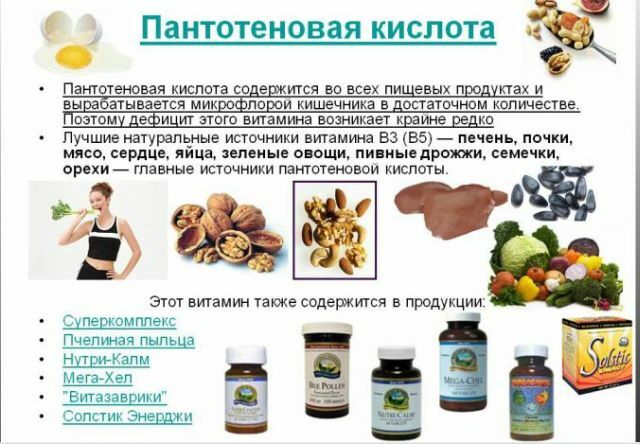
B6( Pyridoxine)
Vitamin B6 stimulates metabolism, promotes protein digestion, amino acid processing. Lack of pyridoxine leads to numbness in the limbs, arthritis.
Products: sprouts of cereals, hazelnuts, potatoes, walnuts, carrots, spinach, cabbage, tomatoes, cherries, strawberries, oranges, lemons, legumes, cereals, dairy and meat products, fish, eggs.
Vitamin C( Ascorbic acid)
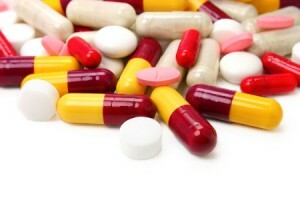 It is necessary in the process of collagen synthesis, which promotes the strength, elasticity and elasticity of ligaments, joints and cartilages.
It is necessary in the process of collagen synthesis, which promotes the strength, elasticity and elasticity of ligaments, joints and cartilages.
Prevents virus diseases of the joints.
Products with vitamin C: rose hips, red bell pepper, black currant, citrus fruits, apples, kiwi, dill, sea buckthorn, parsley, Brussels sprouts.
Lack of vitamin C makes the ligaments and cartilage vulnerable and prone to injury, cracks, and diseases. There is a chance of developing arthritis.
D3( Cholecalciferol) and D2( Ergocalciferol)
Vitamins D2 and D3 contribute to the absorption of calcium by the body, regulates the normal development of the skeleton, preserves the structure of the bones. Increases reabsorption of phosphates.
With a lack of vitamin D, bone pathologies develop. Children may lag behind in physical development. Insufficient amount of vitamin leads to rickets, deformities of the spine, changes in the shape of the legs. In adulthood, a lack of a vitamin can lead to the development of osteoporosis.
Vitamin D is produced by the human body when exposed to sunlight. Products of animal origin: egg yolks, fish oil, caviar, butter, cheese. Vegetable vitamin is available in a horsetail, parsley, nettle.

Vitamin E
Is an active antioxidant, protects body tissues from destructive action of active radicals. Helps strengthen joints and ligaments.
When vitamin E deficiency occurs, the processes of aging are disrupted, the regeneration of the tissues of the joints and ligaments worsens.
High content of vitamin E in sea-buckthorn, egg yolk, beetroot, celery, carrot, dog rose, spinach, peanuts.
Vitamin K
Participates in the production of osteocalcin protein, is needed for normal metabolism in bones and connective tissues. Promotes the absorption of calcium, the interaction of calcium and vitamin D. Collagen synthesis affects the strengthening of ligaments.
If there is a lack of vitamin K, ossification of the cartilages may occur, deformation of the bones in the process of formation.
Vegetable products: spinach, cabbage, lettuce, nettle, wheat bran, cereals, pumpkin, kiwi, banana, avocado, soy, olive oil. Products of animal origin: meat, eggs, cow milk, dairy products.
Microelements are also food for joints and bones
The following elements are necessary for the health of joints, bones, cartilage and ligaments:
- Zinc - promotes bone growth and strength, is required for the metabolism of vitamin E. Zinc is available in nuts and seeds,
 liver beef,beef, lamb, lentils, soybeans, peanuts, hard cheese, oats, wheat, rye, oysters, anchovies, carp, caviar, green peas, corn, dates, broccoli, beets, chocolate, cocoa powder.
liver beef,beef, lamb, lentils, soybeans, peanuts, hard cheese, oats, wheat, rye, oysters, anchovies, carp, caviar, green peas, corn, dates, broccoli, beets, chocolate, cocoa powder. - Selenium - prevents tissue damage;with joint injuries, bones have an anesthetic effect. It is involved in oxidation and reduction processes. Restores the structure of damaged cartilage. Contained in meat, nuts, eggs, fish, oat flakes, wheat sprouts, brown rice. With a lack of selenium in the body, the intake of its inorganic form, sodium selenite, is recommended.
- Calcium is the main constituent element of bones providing strengthening of bone tissue. Contained in sesame, poppy, nettles, dog rose, plantain, almonds, hazelnuts, dry soybeans, fish, cow's milk, cottage cheese, oranges, greens.
- Silicon - helps strengthen the ligaments, cartilage and joints, and also performs additional fixation of calcium in bone tissues, prevents the occurrence of osteoporosis. It is found in coarse flour, black bread, oats, barley, bran, sunflower seeds, Bulgarian pepper, beets, parsley, dill, celery, leek, turnip, radish, radish, tomatoes, Jerusalem artichoke, algae.
- Copper - is necessary to ensure the normal function of ligaments and joints. Prevents the destruction of cartilaginous tissue, activates the production of collagen. With a lack of copper, the process of bone growth is disturbed. Contained in such products: liver, nuts, seafood, cherry, cocoa, sunflower seeds.
Vitamin and mineral complexes
It is often not enough to eat a vitamin rich food. In this case, to strengthen joints and bones it is recommended to use complexes of vitamins and minerals:
- Arthritis .It is recommended in the presence of destructive and inflammatory diseases of bones and joints. Provides
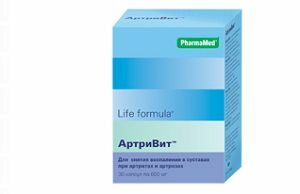 joints with nutrients, improving their flexibility. Activates the processes of cartilage restoration. Contains vitamins C, B6, niacin, pantothenic acid, magnesium, zinc, copper, selenium, silicon.
joints with nutrients, improving their flexibility. Activates the processes of cartilage restoration. Contains vitamins C, B6, niacin, pantothenic acid, magnesium, zinc, copper, selenium, silicon. - Orthomol Artro plus .It is recommended for diseases of cartilage and joints, as well as for arthritis. It is used as a biologically active additive on a regular basis, after injuries and surgeries. Contains vitamins A, C, E, vitamins of group B, D3, pantothenic acid, calcium, zinc, selenium, copper.
- Sustanorm .It is recommended for inflammatory and degenerative diseases of the joints, gout and infectious arthritis. Can be used to prevent osteoporosis, arthritis, gout. Recommended for increased stress on the joints, for example, when playing sports. Contains vitamin C, glucosamine, chondroitin, manganese.
- Collagen Ultra .It helps strengthen bones, stimulates regeneration processes in bones and joints. Recommended for fractures and injuries, damage to the cartilage surface of the meniscus. Contains vitamins A, C, D, calcium, collagen hydrolyzate, glucosamine.
- Calcemin .Promotes the normalization of the calcium-phosphorus exchange. Helps strengthen joints and bones. Recommended as a means of preventing diseases of the musculoskeletal system of the body. Has in the composition of calcium, zinc, copper.
- Vitrum Osteomag .It is prescribed for injuries, fractures, for the prevention of osteoporosis. Effective for strengthening bone tissue.
Has in composition calcium, zinc, magnesium, copper.
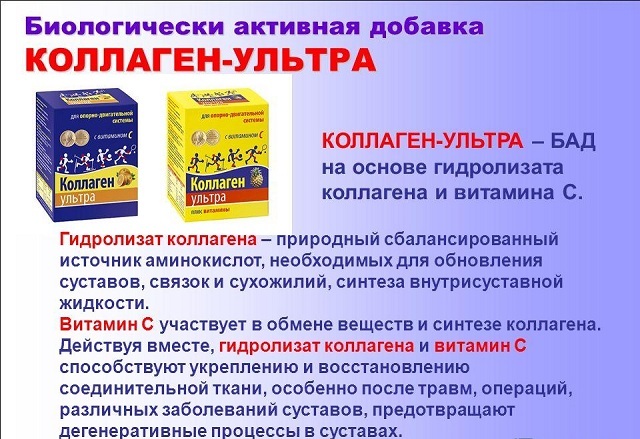
Insufficient amounts of trace elements and vitamins in the body have a negative effect on bones, joints, ligaments and cartilage. However, an excessive amount of them can also lead to the development of pathologies.
It is necessary to adhere to a healthy lifestyle, balance your diet, eat vitamins and micronutrient-rich foods, and use vitamin complexes.



